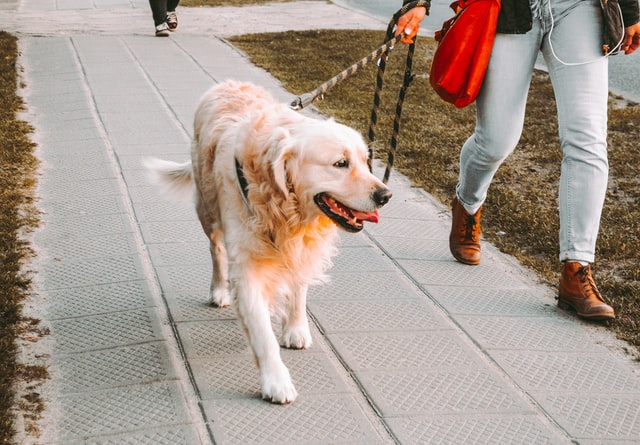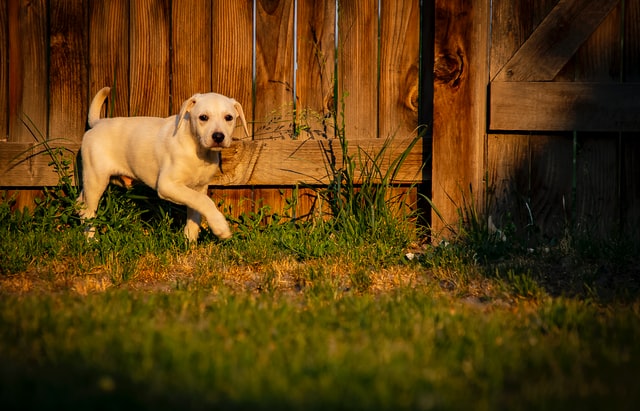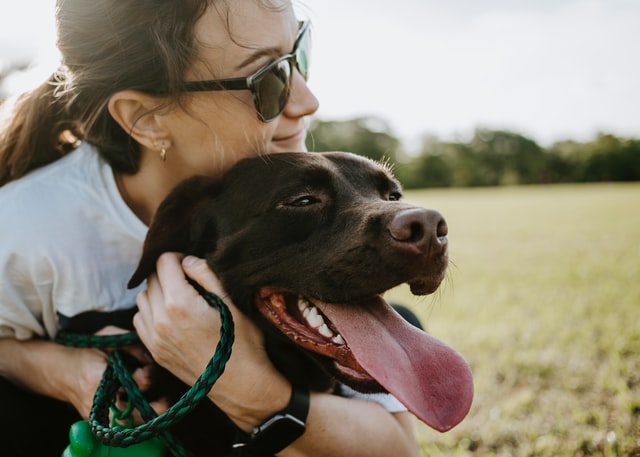7 Ways to Prevent Dognapping: How to Keep Your Dog Safe
Posted: 11/06/2023 | BY: Erin Cain | Categories: Uncategorized
It’s a sad fact that dognapping is on the rise. More and more dogs are being stolen each year, often for ransom or resale. If you want to keep your dog safe, it’s essential to take steps to prevent dognapping from happening in the first place. This article will discuss seven ways dog owners can prevent their pups from being stolen.

Why does dognapping happen?
In recent years, the demand for purebred, haigh value breeds has increased dramatically. With prices of these dogs ranging up to $2,000 or more, it’s easy to see why a thief would want to steal someone’s dog.
Dognapping is becoming increasingly common due to its financial benefits. It sounds like something you’d never believe could happen in your neighborhood, but it has become an all too common way for some people to make some extra cash. With the increased demand for dogs over the COVID lockdown, thieves have taken to “dog-flipping.” They steal a dog only to turn it around and sell it quickly at a high price to an unsuspecting new owner.
Two million pets are stolen every year in the United States, and roughly 80% of missing dogs are never recovered. Since 2007, the American Kennel Club has tracked instances of dognapping in their National Pet Theft Database. The AKC found a 31% increase in stolen dogs since 2013, with newly reported cases daily across communities nationwide.
The theft of our dogs has become an unfortunate trend as criminals find new ways to make quick cash. Some thieves hold the stolen dogs for ransom, while others resell them online or use them in underground dog fighting rings. Thankfully, you can take some sensible steps to prevent your pup from becoming another statistic.

Which dog breeds are most likely to be stolen?
While any dog is in danger of being stolen — even mixed breeds — there are a particular set of dog breeds that are more prone to dognapping than others. Due to size or the thief’s intent, the following breeds are at greater risk of being stolen.
Larger breeds are used for dogfighting rings.
According to the Pet FBI (Found by Internet), dogs such as purebred Pitbull Terriers, Boxers, and German Shepherd dogs, or any mixed breeds with these physical characteristics are among the largest breeds frequently stolen in the United States. Because of their size, strength, and reputation as fierce fighters, these breeds make perfect targets for people who want to steal dogs for dogfighting rings.
Sadly, smaller dog breeds are also sought after for blood sports. These tiny breeds, such as the Yorkshire Terrier and Pomeranian, may be stolen and used as bait dogs for dogfighting training.
Small dog breeds are easy to snatch.
Smaller and more popular dog breeds, like the French Bulldog, Maltese, and Chihuahua, are ideal for dog flippers looking to make money fast. These breeds are so popular that some people will spend exorbitant money purchasing one. Because smaller breeds are cute, cuddly, and full of personality, criminals can charge a higher price on the resale market.
Additionally, their small stature makes tinier dog breeds easier to steal away without much notice. If your small dog is not spayed or neutered, thieves may dognap them to use them as part of a backyard breeding operation.

7 Ways to Prevent dognapping
Canine theft isn’t just something that happens in big cities — it can happen anywhere! Here are some tips to help protect your dog from becoming a victim of dognapping.
1. Microchip your dog.
Microchips are a great way to ensure that your dog has permanent identification if they are stolen or lost.
A collar and ID tag can quickly be removed; however, a microchip prevents a criminal or unsuspecting new dog owner from claiming your dog as theirs. As tiny as the grains used for cooking rice, microchips are small implants that can be embedded in your dog at any vet visit, and they’re always permanent.
Microchips are a way to track dogs. Any dog brought into an official facility such as a police station, animal shelter, or veterinary clinic will be checked for one. When this Seattle pup was stolen and dyed black by her dognapper to keep from being recognized, the dog’s microchip helped return him home. Without this technology in place, the dog’s family would never have known what happened to him.
2. Don’t leave your dog unattended in the yard or in the car.
Leaving your dog unattended in your yard or outside a store is a quick way to lose your pup to thieves. Don’t let your guard down! While dognappers often prowl at night in the dark to take dogs out of backyards, plenty of dogs have also been taken during broad daylight.
You need to keep an eye on your dog if they are outside alone. While a fenced backyard may make it more difficult for a thief to take your dog, it does not make it impossible. It only takes seconds for a thief to pick up your friendly dog and walk off with them.
If you’re thinking about leaving your dog in the car, don’t! It gets hot very quickly and puts their safety at risk, but it also allows dognappers ample opportunity to steal your dog with no one around. It’s essential to keep your dog safe when you’re out and about. If the place you are visiting has a no pet policy, your pup should stay home.
3. Stay alert and change up your walking routine.
Some dogs are worth a lot of money and can be targeted during their daily walks. It is always recommended to vary walking routes and times to avoid making your routine predictable or easy for a thief.
Be wary of strangers approaching you and your dog. While most dog parents want to talk about their pup, those are red flags if strangers start asking you questions about how much you paid for the dog, if it’s purebred, and where you live. It might seem like a nice, conversational gesture, but criminals often use these tactics to gain the information they can use to steal your dog later on.

4. Spay or neuter your dog.
Dognappers often find themselves looking for dogs who haven’t been spayed or neutered because they can be sold to puppy mills. They’ll spend their days in cages and produce puppies that may end up sold online for a profit.
Puppy mills are terrible places for dogs where they are not allowed the freedom to move. They often suffer malnutrition and dehydration and receive little to no veterinary care. Often, dogs are bred repeatedly until they can no longer have puppies. They face uncertain fates once they are no longer productive for the puppy mill. Puppies are removed too early from their mother, leading to health and behavioral problems in the future.
The benefits of having your dog spayed or neutered are many, and removing temptation from would-be thieves is one good reason.
5. Report suspicious individuals and vehicles.
Keep your eyes peeled for strange cars or trucks that spend a little too long around the houses in your neighborhood, and watch out if you see unfamiliar people walking on your street. In Illinois in 2017, two dog thieves managed to steal multiple purebred dogs from pet parents by posing as animal control officers. The men scoped out homes with dogs in advance during the day, then came back and stole the dogs from their backyards at night.
Call the police if you have any doubts or suspicions about strangers or unknown cars in your neighborhood, especially if they are hanging around. The authorities will collect your information, investigate, and take care of the matter.

6. Be extra alert with purebred dogs.
The higher price tag on purebred dogs can make them a more tempting target for thieves. Dognappers are less likely to make money on reselling mixed breed pups. Since purebred canines are in high demand, those dogs are likely to be targeted by criminals.
Many people prefer the idea of owning a purebred dog rather than adopting one from a shelter or rescue, and they are more than willing to pay a higher price for that dog. If you have a purebred dog, it’s important to be extra vigilant to prevent your dog from being flipped to someone else for lots of money.
7. Train your dog to recall.
Does your dog love everyone she meets? As cute as that trait may be, it can also place your dog at risk of being stolen. Keep your pup protected from dog thieves by making sure she has mastered the recall command. If your dog is friendly with strangers and won’t come back to you after meeting someone new, it will be easier for dognappers to target her.
Take the time to consistently train a reliable recall command in your dog. It can prevent theft, but it is also a handy command for your dog to respond and return to you during difficult and dangerous situations. Recall can be fun to work on with your dog, and there is plenty of training advice and recall games for your pup to try.

What should you do if your dog is stolen?
What if your dog does go missing, and you think she may have been stolen? Here are the steps to take immediately upon learning your dog is gone:
- Contact your local police department or sheriff’s office, veterinarian, animal shelters and rescues, and friends and neighbors to report your dog missing.
- Alert the microchip company if they receive a call that the dog has been found.
- Consider filling out a lost pet report and flyer in the PetFBI national database of missing and stolen dogs.
- Walk and investigate the area where your dog was last seen. Talk with neighbors about anything they may have witnessed or heard around the time your pup was taken.
- One way to find your pup is by putting up flyers in prominent places where your dog was last seen. You should also post on social media sites like Facebook and Instagram with the hashtag #findmydog, so people can share their knowledge of any sightings.
- Never meet a caller who says they have your dog in way place, alone, and don’t give them any money until you have your dog in your possession. Unfortunately, some people like to take advantage of other people’s misfortune. If someone calls and says, they have your pup but need money to send the dog back to you, walk away. Sadly, this is a common scam that many dog parents fall for in desperation to find their pup.
- There have been cases where people’s pets were stolen to be sold for profit. The thief may advertise on social media or local news outlets to find someone looking specifically for that type of pet and willing to pay a high price for it. Make a regular habit of checking your local newspaper’s classified ads and social media “for sale” posts if your dog is advertised on these forums.
Remember to always keep authorities in the loop, continue posting flyers, making social media posts, and looking out for your dog anywhere you go.

Protect your dog inside and out.
You need to watch your dog as much as possible to prevent dognapping. But what can you do about caring for your dog otherwise? Consider purchasing a pet insurance policy that will protect your dog and your budget in an emergency.
With your information, Pet Insurance Review will compare hundreds of plans from pet insurance providers to find the right one for you and your pup. Get a free quote today, and start protecting your dog on the outside and the inside.
References:
- Ginsberg, M. (2021). L.A.’s Canine Crime Wave Has Angelenos Keeping Their Pets on a Tight Leash. Retrieved from https://www.lamag.com/citythinkblog/dognappings-canine-crime-wave-gaga/
- Cosgrove, N. (2022). 10 Dognapping and Dog Theft Statistics to Know in 2022. Retrieved from https://petkeen.com/dognapping-dog-theft-statistics/
- Premier Pet Relocation. (2013). THU. THOUGHT: PROTECT PETS FROM THEFT. Retrieved from http://www.premierpetrelocation.com/index.php/home/item/thursday-s-thought-2
- PetFBI. (2022). Pet FBI Is The Free Database And Information Center For Lost And Found Pets. Retrieved from https://petfbi.org/
- Santia, M. (2017). Devastation as Thieves Target Small Dog Breeds in New York. Retrieved from https://www.nbcnewyork.com/news/local/thieves-targeting-small-dog-breeds-for-cash-in-nyc/235075/
- Cuddly Staff. (2022). 10 Most Frequently Stolen Dog Breeds. Retrieved from https://blog.cuddly.com/pet-health-wellness/10-most-frequently-stolen-dog-breeds/
- Golgowski, N. (2015). Stolen dog reunited with owners after being dyed black by Seattle homeless woman: family. Retrieved from https://www.nydailynews.com/news/national/stolen-seattle-dog-reunited-owners-dyed-black-article-1.2367428
- paws. (2022). Buyer Beware: The Problem with Puppy Mills and Backyard Breeders. Retrieved from https://www.paws.org/resources/puppy-mills/
- Gribble, R. (2017). Fake animal control officers stealing purebred dogs. Retrieved from https://www.nbc4i.com/news/fake-animal-control-officers-stealing-purebred-dogs/
- Lowrey, S. (2019). Come! Tips For Training a Reliable Recall. Retrieved from https://www.akc.org/expert-advice/training/reliable-recall-train-dogs-to-come-when-called/
- PetFBI. (2022). Create a Lost or Found Pet Report and Flyer. Retrieved from https://petfbi.org/report.html#/
The information contained on this blog is intended for informational and educational purposes only and should not be construed as medical advice. It is not a substitute for professional veterinary care. Always consult with your veterinarian before making any changes to your pet's health care or treatment plan.
The authors of this blog are not veterinarians and do not claim to be experts in pet health. The information provided here is based on our own experiences and research, as well as information from reputable sources. However, we cannot guarantee the accuracy or completeness of this information.
We encourage you to do your own research and consult with your veterinarian before making any decisions about your pet's health.
Previous post
Leptospirosis in Dogs: What Pup Parents Need to KnowNext post
Why Do Dogs Lick Everything?Compare top pet insurance providers plans.
Enter your dog’s age in years and months to calculate their age equivalent to human years.
Calculate your dog’s ageEnter your cat’s age in years and months to calculate their age equivalent to human years.
Calculate your cat’s age